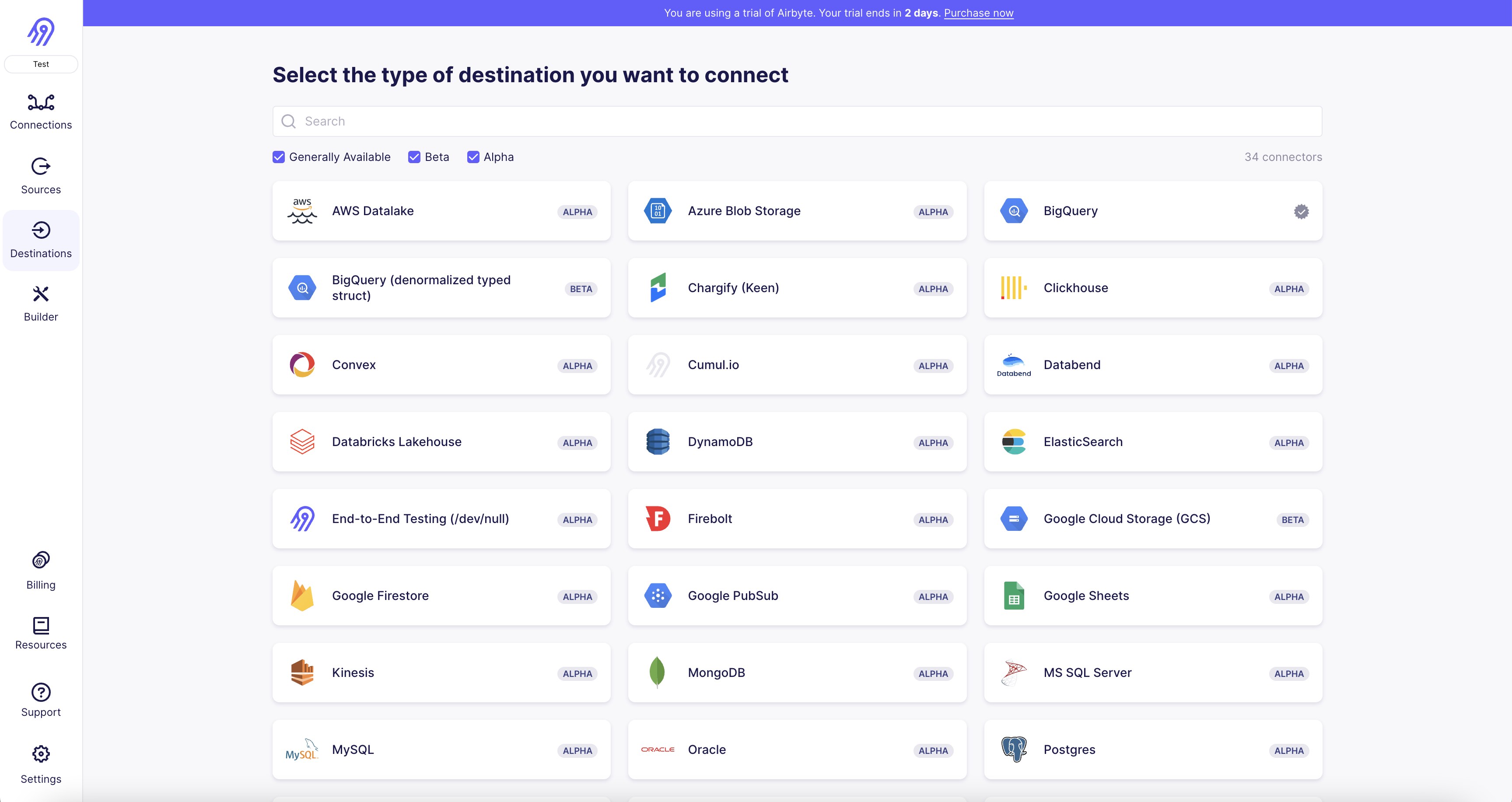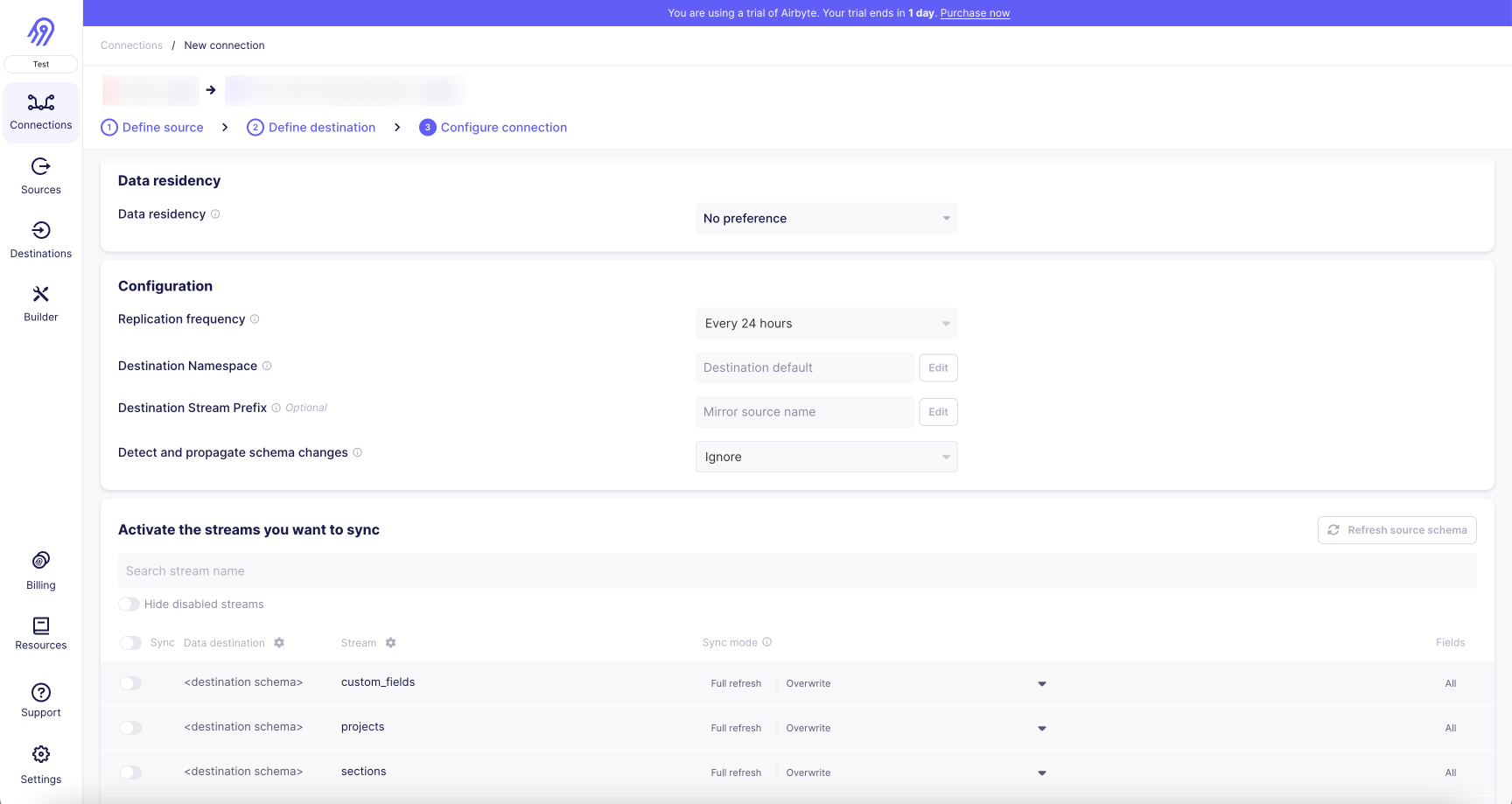TL;DR
This can be done by building a data pipeline manually, usually a Python script (you can leverage a tool as Apache Airflow for this). This process can take more than a full week of development. Or it can be done in minutes on Airbyte in three easy steps:
- set up CSV File as a source connector (using Auth, or usually an API key)
- set up Databend as a destination connector
- define which data you want to transfer and how frequently
You can choose to self-host the pipeline using Airbyte Open Source or have it managed for you with Airbyte Cloud.
This tutorial’s purpose is to show you how.
What is CSV File
A CSV (Comma Separated Values) file is a type of plain text file that stores tabular data in a structured format. Each line in the file represents a row of data, and each value within a row is separated by a comma. CSV files are commonly used for exchanging data between different software applications, such as spreadsheets and databases. They are also used for importing and exporting data from web applications and for data analysis. CSV files can be easily opened and edited in any text editor or spreadsheet software, making them a popular choice for data storage and transfer.
What is Databend
Databend.rs is a cloud data warehouse platform, revolutionizing real-time analytics by seamlessly integrating with object storage. This modern solution empowers organizations to efficiently store, manage, and analyze massive datasets, transforming data into actionable insights at unprecedented speeds. Databend.rs leverages the elasticity of the cloud, enabling seamless scaling to accommodate evolving data needs. Its architecture fosters flexibility, cost-efficiency, and compatibility with diverse data sources, making it a versatile choice for data-driven enterprises. With Databend.rs, businesses can harness the full potential of their data, driving innovation and informed decision-making in a dynamic and competitive digital landscape.
Prerequisites
- A CSV File account to transfer your customer data automatically from.
- A Databend account.
- An active Airbyte Cloud account, or you can also choose to use Airbyte Open Source locally. You can follow the instructions to set up Airbyte on your system using docker-compose.
Airbyte is an open-source data integration platform that consolidates and streamlines the process of extracting and loading data from multiple data sources to data warehouses. It offers pre-built connectors, including CSV File and Databend, for seamless data migration.
When using Airbyte to move data from CSV File to Databend, it extracts data from CSV File using the source connector, converts it into a format Databend can ingest using the provided schema, and then loads it into Databend via the destination connector. This allows businesses to leverage their CSV File data for advanced analytics and insights within Databend, simplifying the ETL process and saving significant time and resources.
Step 1: Set up CSV File as a source connector

1. Open the Airbyte platform and navigate to the "Sources" tab on the left-hand side of the screen.
2. Click on the "CSV File" source connector and select "Create new connection."
3. Enter a name for your connection and click "Next."
4. In the "Configuration" tab, select the CSV file you want to connect to by clicking on the "Choose File" button and selecting the file from your local machine.
5. In the "Schema" tab, you can customize the schema of your data by selecting the appropriate data types for each column.
6. In the "Credentials" tab, enter the necessary credentials to access your CSV file. This may include a username and password or other authentication details.
7. Once you have entered your credentials, click "Test Connection" to ensure that Airbyte can successfully connect to your CSV file.
8. If the connection is successful, click "Create Connection" to save your settings and start syncing your data.
9. You can monitor the progress of your sync in the "Connections" tab and view your data in the "Destinations" tab.
Step 2: Set up Databend as a destination connector

1. Go to the Databend website and create an account if you haven't already.
2. Log in to your Databend account and navigate to the "Destinations" section.
3. Click on "Add Destination" and select "Airbyte" from the list of available connectors.
4. Enter your Airbyte API key and other required credentials.
5. Choose the data source you want to connect to and configure the settings for the destination connector.
6. Test the connection to ensure that the data is being transferred correctly.
7. Once the connection is established, you can start transferring data from your source to the Databend destination using Airbyte.
Step 3: Set up a connection to sync your CSV File data to Databend

Once you've successfully connected CSV File as a data source and Databend as a destination in Airbyte, you can set up a data pipeline between them with the following steps:
- Create a new connection: On the Airbyte dashboard, navigate to the 'Connections' tab and click the '+ New Connection' button.
- Choose your source: Select CSV File from the dropdown list of your configured sources.
- Select your destination: Choose Databend from the dropdown list of your configured destinations.
- Configure your sync: Define the frequency of your data syncs based on your business needs. Airbyte allows both manual and automatic scheduling for your data refreshes.
- Select the data to sync: Choose the specific CSV File objects you want to import data from towards Databend. You can sync all data or select specific tables and fields.
- Select the sync mode for your streams: Choose between full refreshes or incremental syncs (with deduplication if you want), and this for all streams or at the stream level. Incremental is only available for streams that have a primary cursor.
- Test your connection: Click the 'Test Connection' button to make sure that your setup works. If the connection test is successful, save your configuration.
- Start the sync: If the test passes, click 'Set Up Connection'. Airbyte will start moving data from CSV File to Databend according to your settings.
Remember, Airbyte keeps your data in sync at the frequency you determine, ensuring your Databend data warehouse is always up-to-date with your CSV File data.
Use Cases to transfer your CSV File data to Databend
Integrating data from CSV File to Databend provides several benefits. Here are a few use cases:
- Advanced Analytics: Databend’s powerful data processing capabilities enable you to perform complex queries and data analysis on your CSV File data, extracting insights that wouldn't be possible within CSV File alone.
- Data Consolidation: If you're using multiple other sources along with CSV File, syncing to Databend allows you to centralize your data for a holistic view of your operations, and to set up a change data capture process so you never have any discrepancies in your data again.
- Historical Data Analysis: CSV File has limits on historical data. Syncing data to Databend allows for long-term data retention and analysis of historical trends over time.
- Data Security and Compliance: Databend provides robust data security features. Syncing CSV File data to Databend ensures your data is secured and allows for advanced data governance and compliance management.
- Scalability: Databend can handle large volumes of data without affecting performance, providing an ideal solution for growing businesses with expanding CSV File data.
- Data Science and Machine Learning: By having CSV File data in Databend, you can apply machine learning models to your data for predictive analytics, customer segmentation, and more.
- Reporting and Visualization: While CSV File provides reporting tools, data visualization tools like Tableau, PowerBI, Looker (Google Data Studio) can connect to Databend, providing more advanced business intelligence options. If you have a CSV File table that needs to be converted to a Databend table, Airbyte can do that automatically.
Wrapping Up
To summarize, this tutorial has shown you how to:
- Configure a CSV File account as an Airbyte data source connector.
- Configure Databend as a data destination connector.
- Create an Airbyte data pipeline that will automatically be moving data directly from CSV File to Databend after you set a schedule
With Airbyte, creating data pipelines take minutes, and the data integration possibilities are endless. Airbyte supports the largest catalog of API tools, databases, and files, among other sources. Airbyte's connectors are open-source, so you can add any custom objects to the connector, or even build a new connector from scratch without any local dev environment or any data engineer within 10 minutes with the no-code connector builder.
We look forward to seeing you make use of it! We invite you to join the conversation on our community Slack Channel, or sign up for our newsletter. You should also check out other Airbyte tutorials, and Airbyte’s content hub!
What should you do next?
Hope you enjoyed the reading. Here are the 3 ways we can help you in your data journey:

Easily address your data movement needs with Airbyte Cloud
Take the first step towards extensible data movement infrastructure that will give a ton of time back to your data team.
Get started with Airbyte for free


Talk to a data infrastructure expert
Get a free consultation with an Airbyte expert to significantly improve your data movement infrastructure.
Talk to sales


Improve your data infrastructure knowledge
Subscribe to our monthly newsletter and get the community’s new enlightening content along with Airbyte’s progress in their mission to solve data integration once and for all.
Subscribe to newsletter











.png)